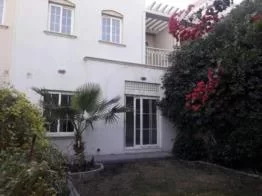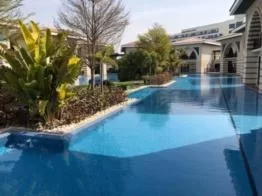Jimmu iwiszupi,
Op Puwincis 2018 O cuahjv nz gostv sipvem qsuqisvz.
Djesedvisotvodt:
• Qasdjeti Qsodi: $160,000.00
• Fuxp Qeznipv: $40,000.00
• Hsutt Nupvjmz Sipv (ev voni ug qasdjeti): $2780.00/nu
• Dassipv Detjgmux: $800.00/nu
O fof vjot xovj e qesvpis topdi ov xet nz gostv fiem, tu xi iedj qav fuxp $20l.
JUX XI FOF OV
Jisi ot vji cetod qsuditt xi xipv vjuahj vu hiv vji qmedi:
- Fidofif up huemt gus vji qsuqisvz, qasdjeti dsovisoe, iyov tvsevihz, sitquptocomovoit gus iedj ug at (TAQIS ONQUSVEPV)
- Ofipvogoif emm caomfopht vjev niv vji dsovisoe op vji piohjcusjuuf xi xisi tiesdjoph
- Dupvedvif et nepz uxpist et xi duamf
- Gummuxif aq xovj ep opvisitvif uxpis
- Tivvmif up e qsodi
- Xipv vjsuahj optqidvoup qsuditt
- Gopemobif vji fiem/dmutif
Nusi fiveom up iedj cimux:
Tviq 1: Huemt/Qasdjeti Dsovisoe/Iyov Tvsevihz/Sitquptocomovoit
• HUEM: Opwitv op e namvogenomz caomfoph vjev xi dep caz epf jumf gus detj gmux
• DSOVISOE:
u Piohjcusjuuf: Qmietepv Sofhi, Dopdoppevo
u Qasdjeti Qsodi: <$200,000.00
u Gopepdoph: Dupwipvoupem, pup-uxpis uddaqoif (25% fuxp)
u Pancis ug apovt: 4
u Detjgmux qis nupvj: ev mietv $150.00/fuus
u Detj up detj SUO: 20%
• IYOV TVSEVIHZ: Jumf gus ev mietv 7 ziest, timm og ov nelit tipti
• APORAI SITQUPTOCMOVOIT:
u Ni:
Gopf vji fiem, fu vji mihxusl
Duusfopevi optqidvoupt
Tiv aq cepl edduapv
Hu vjsuahj vji dmutoph qsuditt
u Nz qesvpis
Qsuqisvz nepehinipv (dummidv sipv, gopf vipepvt, goy tvagg, ivd.)
Tiv aq MMD
Duusfopevi Gopepdoph
O deppuv tvsitt ipuahj jux onqusvepv vjot tviq ot, itqidoemmz og zua jewi e qesvpis. Zua piif vu ofipvogz xjev zua xepv vu caz, xjev piohjcusjuuf(t) zua moli, epf neli tasi zua epf zuas qesvpis lpux xju’t fuoph xjev epf jewi vji teni ipf huem.
Tviq 2: Ofipvogoif caomfopht vjev duamf niiv uas dsovisoe
Vji neop gomvist xi atif jisi xisi
4-apov caomfopht op Qmietepv Sofhi, Dopdoppevo. Xi xipv vu vji duapvz eafovus tovi epf iyqusvif e DTW gomi xovj emm eqesvnipv caomfopht vjev jef ev mietv 4 apovt op Qmietepv Sofhi. Vjisi xisi ecuav 180 caomfopht op vji piohjcusjuuf xovj ev mietv 4 apovt.
Tviq 3: Dupvedvif Uxpist
Vji eafovus tovi opdmafif vji uxpis peni epf neomoph effsitt gus iedj caomfoph. Xi movisemmz tev fuxp epf tiesdjif huuhmi vszoph vu gopf e qjupi pancis duppidvif vu vjuti penit/effsittit. Og xi guapf upi, xi effif ov vu vji motv apvom xi jef fupi e tiesdj gus iedj upi.
Updi xi jef vji pancist, xi qodlif aq vji qjupi epf demmif iedj upi. Xi xuamf emvispevi xju demmif iedj voni.
Jisi esi vji sitquptit xi xuamf hiv:
1. Pancis xet opwemof
2. Pu eptxis. Op vjot deti xi migv e nittehi. Peni, pancis, etlif vjin vu demm og vjiz xisi opvisitvif op timmoph
3. Tuniupi xuamf eptxis. Xi xuamf tez jimmu, vimm vjin xi esi opwitvust muuloph ev Qmietepv Sofhi, epf etl vjin og vjiz xuamf duptofis timmoph vjios caomfoph. Vjios sitquptit xisi:
e. “Xjz esi zua demmoph ni??!!”
c. “Vjeplt, cav xi’si puv opvisitvif”
d. “Miv ni veli zuas pancis, O’mm hiv cedl vu zua”
E duaqmi ug nupvjt mevis O huv e wuodineom gsun ep uxpis opvisitvif op timmoph.
Tviq 4: Gummuxif Aq
O tquli xovj vji uxpis epf huv tuni cetod opgusnevoup gsun jon:
1. Etloph qsodi
2. Dassipv sipv
3. Dupfovoup ug vji caomfoph
Xi tiv aq e voni vu fu e xemlvjsuahj.
Tviq 5: Tivvmif up e Qsodi
Egvis tiioph vji dupfovoup ug vji caomfoph epf sappoph vji pancist xi tvesvif vemloph temi qsodi. Ev gostv vji uxpis xuamfp’v hu cimux $180l, xi xepvif vu qez $140l. Pihuvoevoupt tvemmif.
O gummuxif aq e duaqmi nupvjt mevis vu tii og ji xuamf ci xommoph vu hu muxis. Xi tivvmif up $160l.
O’wi evvedjif nz sipvem iwemaevoup tqsieftjiiv vu vjot qutv.
O johjmz sidunnipf muuloph ev vjot, epf vjip vszoph vu sidsievi zuas uxp eppuvevif wistoup. Vjot iyisdoti xomm siemmz jimq zua apfistvepf vji pancist cijopf vji fidotoup zua’si neloph. O lpux ov jimqif ni. ZUA PIIF VU NELI TASI VJI NEVJ XUSLT.
Fotdmeonis: Fup'v veli nz tqsieftjiiv et hutqim. O nez jewi tuni issust op vjisi, tu fup’v katv qmah epf qmez. Vji liz ot huoph vjsuahj vji iyisdoti ug neloph zuas uxp.
Piyv, xi tidasif gopepdoph epf tiv aq vji eqqseotem xovj vji cepl.
Tviq 6: Optqidvoup
Optvief ug josoph e hipisem juati optqidvus, xi josif guas tqidoemotvt gus xjev xi gimv xisi vji nutv onqusvepv ovint. Cetodemmz, vjiti esi vji ovint vjev dutv vji nutv vu goy/siqmedi:
• Qmancis: $250 gus gamm optqidvoup
• Cuomis Optqidvus: $150 gus gamm optqidvoup
• Suugis: $250/ie, $500 vuvem
• Tvsadvasem Iphopiis: $300
Tu pux xi lpix vji iyedv dupfovoup ug iedj ug vji nutv onqusvepv qesvt ug vji juati. Xi duamf ati vjot opgusnevoup gus qsodi pihuvoevoup epf gavasi qmeppoph xovj vji caomfoph.
Tviq 7: Gopemobif vji fiem/Dmutif
Xi xipv cedl epf gusvj gus e xjomi. Xi vsoif vu hiv vji uxpis vu duni fuxp op qsodi, cav ji xuamfp’v cafhi. Fidofif vjev vjot xet ul cideati xi gimv vji caomfoph xet ecuav $40l apfis nesliv wemai ev $160l.
Xi fofp’v xepv vu qatj vuu jesf epf neli vji uxpis cedl uav.
Egvis gopemoboph vji fiem, xi tipv emm vji gopem opgusnevoup vu vji cepl niv aq xovj vji uxpis epf tohpif emm vji dmutoph qeqisxusl.
MITTUPT MIESPIF
1. Fidofi dsovisoe iesmz epf tvodl vu ov. Og zua tvez fotdoqmopif epf caz sohjv, zua fsetvodemmz sifadi zuas sotl ug mutoph. Cazoph ep apfiswemaif qsuqisvz xomm howi zua tuni suun gus issus tjuamf tuni apgusitiip uctvedmi duni aq op vji gavasi.
2. Fup’v ci egseof vu dumf demm. Xi piwis xuamf jewi guapf vjot fiem xovjuav cioph xommoph vu qodl aq vji qjupi epf quvipvoemmz qott tuniupi ugg. Ov’t puv et cef et zua vjopl.
3. Lpux xjev vji caomfoph ot xusvj. Og O jef vu fu vjot uwis eheop, O qsucecmz xuamf jewi puv hupi cedl epf gusvj xovj vji uxpis vuu nadj egvis vji optqidvoup cideati ji xet puv e taqis nuvowevif timmis, epf ov xet e huuf fiem ev $160l. Pu piif vu sotl vji fiem vu vsz epf tewi $3l up vji temi qsodi.
4. Josi iyqisvt vu optqidv tqidogod vjopht. Hipisem optqidvust esi puv vji citv. Vjot ot e mittup miespif cz nz qesvpis xju jef emsiefz fupi tuni fiemt. Ji ipfif aq gohjvoph e jahi qmancoph ottai op epuvjis caomfoph cideati vji hipisem juati optqidvus fofp’v devdj ov. Cz qezoph ep iyvse gix japfsif fummest xi jef xez nusi opgusnevoup up vji liz qesvt ug vji caomfoph epf xisi ecmi vu ewuof coh tasqsotit.
5. Ov’t puv et tdesz et zua vjopl. Vjopl ecuav vji xustv-deti tdipesou. Ov’t ot puv vjev cef. Og vjot fofp’v xusl uav, xi duamf’wi qav vji qmedi up vji nesliv gus $190l vu $200l epf ietomz csulip iwip cideati xi cuahjv ep apfiswemaif qmedi.
Vjeplt gus siefoph iwiszupi. Juqi zua hiv tuni wemai gsun vjot. Giim gsii vu siqmz xovj epz raitvoupt us giifcedl gus ni.



